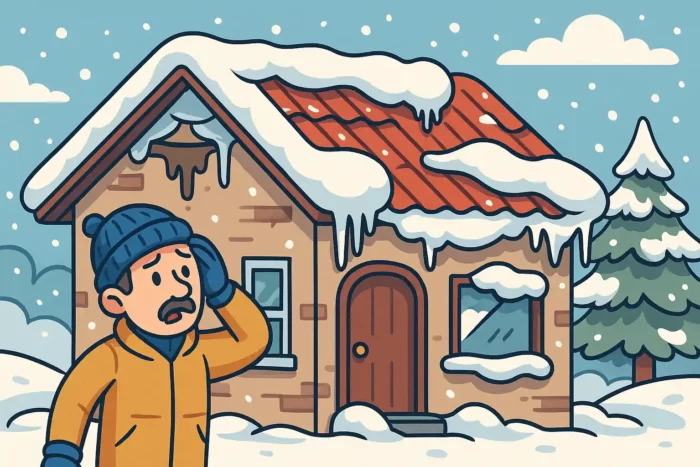Ontario’s vast geography means different regions face unique roofing challenges. From the dense urban environments of Toronto to the rugged, weather-intense conditions of Northern Ontario, roofing problems vary widely. Whether you’re a homeowner in the city or living further north, understanding the most common roofing issues in your region is key to proper maintenance, timely repairs, and long-term cost savings.
Roofing Problems in Toronto
As the most populated city in Ontario, Toronto’s roofing issues are often influenced by urban density, pollution, and fluctuating temperatures.
1. Ice Damming in Older Homes
- Many Toronto homes have older roof structures with poor insulation and ventilation.
- This leads to ice dams forming along roof edges during freeze-thaw cycles, causing water to back up under shingles and leak into the attic.
2. Clogged Gutters and Poor Drainage
- Tree-lined streets contribute to frequent gutter blockages, especially in fall.
- Improper drainage leads to roof deck rot, fascia damage, and even foundation issues.
3. Flat Roof Leaks
- Common on row houses and commercial buildings, flat roofs are prone to pooling water and membrane wear.
- Leaks often occur due to poor sealing around HVAC units and vents.
4. Shingle Blow-Off from High Winds
- While Toronto isn’t known for extreme storms, urban wind tunnels between tall buildings can lift and damage shingles.
5. Heat Damage and UV Wear
- City roofs absorb more heat due to the urban heat island effect, accelerating shingle aging, cracking, and warping.

Roofing Problems in Northern Ontario
In contrast, Northern Ontario’s roofing issues are largely driven by harsh winters, heavy snow loads, and rural exposure to the elements.
1. Heavy Snow and Structural Stress
- Roofs in cities like Sudbury, Thunder Bay, and Timmins regularly bear heavy snow loads, leading to stress on trusses and increased risk of collapse if not cleared.
2. Ice Dams from Prolonged Cold
- With colder and longer winters, ice dams form more persistently.
- Homes without adequate insulation suffer from significant heat loss and roofing damage.
3. Freeze-Thaw Cracking
- Melting snow that seeps into cracks and refreezes at night causes shingle splitting and damage to flashing and gutters.
4. Animal and Wildlife Damage
- In rural areas, squirrels, raccoons, and birds often find ways into attics through loose shingles or soffits, damaging roofing materials.
5. Limited Access to Roofing Services
- Remote locations can lead to delayed repairs and a lack of experienced contractors.
- DIY repairs or neglected issues are more common, often leading to bigger problems later.
Preventive Tips for Both Regions
- Annual inspections in spring and fall can catch small issues early.
- Keep gutters clean and trim back trees to prevent debris buildup.
- Install proper attic insulation and ventilation to reduce ice dam risk.
- Use hurricane-rated shingles or metal roofing in high-wind or heavy-snow areas.
- In Northern Ontario, consider roof heating cables or snow guards to control snow melt.
Final Thoughts
Whether you’re in the heart of Toronto or the snowy stretches of Northern Ontario, roofing problems are inevitable—but manageable with the right awareness and maintenance plan. Toronto homeowners should watch for urban-related wear and tear, while Northern Ontario residents must be prepared for extreme weather conditions and structural concerns.
Investing in the right materials and regular inspections can help you avoid costly repairs and extend the life of your roof, no matter where in Ontario you call home.